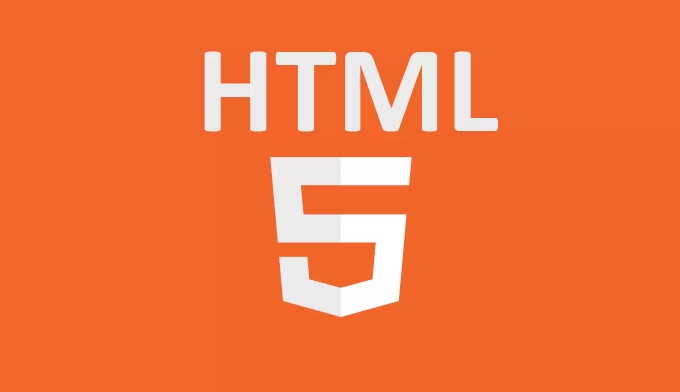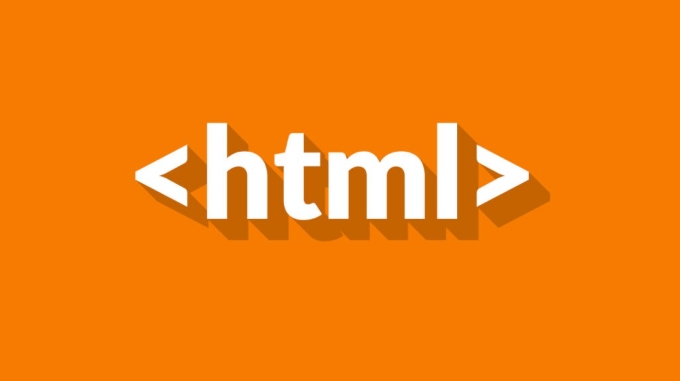What are different input types in HTML5 forms?
Jul 24, 2025 am 02:54 AMHTML5 introduces a variety of new input types to improve user experience and reduce dependence on JavaScript verification, including: 1. Email is used to verify the mailbox format and supports mobile-only keyboards; 2. Number supports numerical input and limit range and step size; 3. date provides a date selector and fixed format to YYYY-MM-DD; 4. URL verification URL format and requires the include protocol header; 5. Tel is usually used in combination with pattern attributes for phone number input; in addition, there are other types such as color, range, search and file. These input types are elegantly downgraded to normal text boxes in unsupported browsers, but can still improve the overall form interactive experience.

HTML5 introduced several new input types that help improve the user experience and reduce the need for JavaScript to handle form validation. These input types are designed to let browsers handle different kinds of data more appropriately — whether it's text, numbers, dates, emails, or other specific formats.

Here are some of the most commonly used HTML5 input types and what they're good for:
email – For email addresses
This input type is specifically meant for email fields. When a user tries to submit the form, the browser checks if the value matches a basic email format (like username@domain.tld). On mobile devices, it often brings up a keyboard with an "@" symbol readily available.

<input type="email" name="user_email" placeholder="you@example.com" required>
- The
requiredattribute ensures the field can't be left blank. - You can also use the
multipleattribute to allow several comma-separated emails.
number – For numeric values
Use this when you want users to enter a number. It usually comes with small up/down arrows in desktop browsers for easy incrementing.
<input type="number" name="quantity" min="1" max="10" step="1">
-
minandmaxset limits on the allowed values. -
stepdefines how much the number increases or decreases when clicking the arrows.
Note: This doesn't restrict input to only numbers — users can still type letters, but the browser will mark it as invalid on submission.

date – For selecting a date
This input displays a calendar-style date picker in supported browsers, making it easier for users to choose a date without typing manually.
<input type="date" name="birthdate">
- Format is always YYYY-MM-DD.
- You can also use related types like
datetime-local,month,time, andweekdepending on your needs.
url – For web addresses
Similar to email , this type validates that the input looks like a URL.
<input type="url" name="website" placeholder="https://example.com">
- Requires the full URL including http:// or https://.
- Helps prevent accidental typos in links.
tel – For telephone numbers
Designed for phone number input. Doesn't have strict built-in validation because phone formats vary widely across countries.
<input type="tel" name="phone" pattern="[0-9]{3}-[0-9]{3}-[0-9]{4}">- Often used with a
patternattribute to enforce a specific format. - Mobile browsers may show a numeric keypad by default.
Other useful input types
There are a few more specialized ones worth mentioning:
-
color– Opens a color picker dialog. -
range– A slider control for picking a value within a range. -
search– Similar to text, but styled slightly differently in some browsers. -
file– Allows file uploads (can includeacceptattribute to limit file types).
These input types make forms smarter and more user-friendly without needing extra scripts. While not all browsers support every type equally, using them is still a good practice since they gracefully fall back to regular text inputs in older environments.
Basically that's it.
The above is the detailed content of What are different input types in HTML5 forms?. For more information, please follow other related articles on the PHP Chinese website!

Hot AI Tools

Undress AI Tool
Undress images for free

Undresser.AI Undress
AI-powered app for creating realistic nude photos

AI Clothes Remover
Online AI tool for removing clothes from photos.

Clothoff.io
AI clothes remover

Video Face Swap
Swap faces in any video effortlessly with our completely free AI face swap tool!

Hot Article

Hot Tools

Notepad++7.3.1
Easy-to-use and free code editor

SublimeText3 Chinese version
Chinese version, very easy to use

Zend Studio 13.0.1
Powerful PHP integrated development environment

Dreamweaver CS6
Visual web development tools

SublimeText3 Mac version
God-level code editing software (SublimeText3)
 Handling reconnections and errors with HTML5 Server-Sent Events.
Jul 03, 2025 am 02:28 AM
Handling reconnections and errors with HTML5 Server-Sent Events.
Jul 03, 2025 am 02:28 AM
When using HTML5SSE, the methods to deal with reconnection and errors include: 1. Understand the default reconnection mechanism. EventSource retrys 3 seconds after the connection is interrupted by default. You can customize the interval through the retry field; 2. Listen to the error event to deal with connection failure or parsing errors, distinguish error types and execute corresponding logic, such as network problems relying on automatic reconnection, server errors manually delay reconnection, and authentication failure refresh token; 3. Actively control the reconnection logic, such as manually closing and rebuilding the connection, setting the maximum number of retry times, combining navigator.onLine to judge network status to optimize the retry strategy. These measures can improve application stability and user experience.
 Integrating CSS and JavaScript effectively with HTML5 structure.
Jul 12, 2025 am 03:01 AM
Integrating CSS and JavaScript effectively with HTML5 structure.
Jul 12, 2025 am 03:01 AM
HTML5, CSS and JavaScript should be efficiently combined with semantic tags, reasonable loading order and decoupling design. 1. Use HTML5 semantic tags, such as improving structural clarity and maintainability, which is conducive to SEO and barrier-free access; 2. CSS should be placed in, use external files and split by module to avoid inline styles and delayed loading problems; 3. JavaScript is recommended to be introduced in front, and use defer or async to load asynchronously to avoid blocking rendering; 4. Reduce strong dependence between the three, drive behavior through data-* attributes and class name control status, and improve collaboration efficiency through unified naming specifications. These methods can effectively optimize page performance and collaborate with teams.
 Receiving real-time data with HTML5 Server-Sent Events (SSE).
Jul 02, 2025 pm 04:46 PM
Receiving real-time data with HTML5 Server-Sent Events (SSE).
Jul 02, 2025 pm 04:46 PM
Server-SentEvents (SSE) is a lightweight solution provided by HTML5 to push real-time updates to the browser. It realizes one-way communication through long HTTP connections, which is suitable for stock market, notifications and other scenarios. Create EventSource instance and listen for messages when using: consteventSource=newEventSource('/stream'); eventSource.onmessage=function(event){console.log('Received message:',event.data);}; The server needs to set Content-Type to text/event
 Declaring the correct HTML5 doctype for modern pages.
Jul 03, 2025 am 02:35 AM
Declaring the correct HTML5 doctype for modern pages.
Jul 03, 2025 am 02:35 AM
Doctype is a statement that tells the browser which HTML standard to use to parse the page. Modern web pages only need to be written at the beginning of the HTML file. Its function is to ensure that the browser renders the page in standard mode rather than weird mode, and must be located on the first line, with no spaces or comments in front of it; there is only one correct way to write it, and it is not recommended to use old versions or other variants; other such as charset, viewport, etc. should be placed in part.
 Creating Basic Forms with Bootstrap: A Step-by-Step Tutorial
Jul 02, 2025 am 12:12 AM
Creating Basic Forms with Bootstrap: A Step-by-Step Tutorial
Jul 02, 2025 am 12:12 AM
Bootstrapsimplifiescreatingresponsiveandelegantforms.Keypointsinclude:1)Startwithbasicformcomponentsforintuitivedesign.2)Customizeformsforcompactnessorspecificneeds.3)Implementbothclient-sideandserver-sidevalidationforsecurity.4)Optimizeperformanceby
 How to create button elements in HTML forms.
Jul 03, 2025 am 02:39 AM
How to create button elements in HTML forms.
Jul 03, 2025 am 02:39 AM
Buttons are key interactive elements in HTML forms. There are two main ways to create: 1. Use tags to create custom buttons that support nested content, and the type attribute can be set to submit, reset or button; 2. Use tags to create basic buttons that only display text, suitable for simple scenarios. It is also recommended to combine CSS to set padding, font-size, border-radius and other styles to improve clickability and appearance, and enhance the interactive experience through:hover and:active status. The submission button can also use the disabled attribute to prevent repeated submissions.
 Improving SEO with HTML5 semantic markup and Microdata.
Jul 03, 2025 am 01:16 AM
Improving SEO with HTML5 semantic markup and Microdata.
Jul 03, 2025 am 01:16 AM
Using HTML5 semantic tags and Microdata can improve SEO because it helps search engines better understand page structure and content meaning. 1. Use HTML5 semantic tags such as,,,, and to clarify the function of page blocks, which helps search engines establish a more accurate page model; 2. Add Microdata structured data to mark specific content, such as article author, release date, product price, etc., so that search engines can identify information types and use them for display of rich media summary; 3. Pay attention to the correct use of tags to avoid confusion, avoid duplicate tags, test the effectiveness of structured data, regularly update to adapt to changes in schema.org, and combine with other SEO means to optimize for long-term.
 Explaining the HTML5 `` vs `` elements.
Jul 12, 2025 am 03:09 AM
Explaining the HTML5 `` vs `` elements.
Jul 12, 2025 am 03:09 AM
It is a block-level element, suitable for layout; it is an inline element, suitable for wrapping text content. 1. Exclusively occupy a line, width, height and margins can be set, which are often used in structural layout; 2. No line breaks, the size is determined by the content, and is suitable for local text styles or dynamic operations; 3. When choosing, it should be judged based on whether the content needs independent space; 4. It cannot be nested and is not suitable for layout; 5. Priority is given to the use of semantic labels to improve structural clarity and accessibility.






